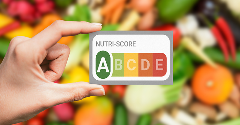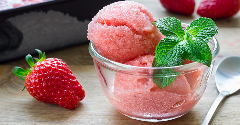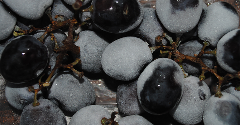News
Top Five Trends for Flavourings
10 Sep 2013According to a report from BCC research, the global flavour industry was worth $11.1 billion in 2012. This market is expected to grow to nearly $14.5 billion in 2017, a CAGR of 5.4%. The soft drinks market accounts for nearly 65% of the flavouring market, mainly because of how easy it is to include new […]

According to a report from BCC research, the global flavour industry was worth $11.1 billion in 2012. This market is expected to grow to nearly $14.5 billion in 2017, a CAGR of 5.4%.
The soft drinks market accounts for nearly 65% of the flavouring market, mainly because of how easy it is to include new flavours to formulate new beverages.
We have detected five future trends in the flavouring market:
Nostalgia
In these times of crisis and instability, consumers look back to the good old days of childhood, comfort, familiar sensations, the time when we took the time… This trend, called “Retrospective” by Givaudan, is about the values of the past, heritage, holiday memories, roots and so on. It is expressed through notes of vanilla, chocolate, speculoos, creamy strawberry, caramel, “banana flambée”, crème brûlée and the like.
Unconventional experiences
This trend is about offering consumers new sensations, unexpected flavours, challenging their senses in every possible way. It could be savoury flavours in sweet categories (such as Wasabi ice cream) or surprising associations (for example, Tesco has launched chocolate and mint flavoured baby beetroot).
Taking their latest inspiration from universal musical themes, the flavourists at Jean Niel have composed an amazing range of truly novel creations for new gustatory experiences (baroque concerto flavour, jazz swing flavour, flamenco Sevilla flavour, samba caliente flavour, rock pop flavour and so on.)

Famille Haussmann has launched “Rouge Sucette”, bringing together red wine and cola, inspired by the Spanish cocktail Calimucho. This kind of recipe is supposed to attract younger people who are more likely to drink wine.
Healthy Flavours
Some ingredients have an inherently healthy image, such as tea, osmanthus, ginger, flowers, botanicals, superfruits, honey and spices. This trend is about using flavours to add health to a formulation in order to allow claims such as detox, energy, balance, zen, soothing, wellness, and body & mind.
Multi-tasking flavours
New flavours bring not only aromas to formulation, but also different functionalities such as salt replacement, dairy substitution, cost reduction and preservation.
Thus we see Multirome LS (DSM) which is a low salt savoury taste ingredient designed to meet the demand for salt reduction, label simplification and naturalness. Another example is DairiFusion PARMPLUS: because of its intense flavour, it can lower standard cheese usage up to 25%, depending on the application, while matching full-flavoured Parmesan profiles. Biorigin has its Biogard line of natural flavours that contribute to natural food preservation, inhibiting growth of some bacteria and against fungi.
Customisation
Consumers need to feel they are unique, the centre of the world: “it’s all about me!” Customisation is giving consumers the opportunity to choose flavours according to their interests, their style, their feelings. It’s the Subway concept: you choose the bread, the garnishing, the sauce to create a custom lunch.
Related news

UK to ban junk food TV advertisements before 9pm
3 Oct 2024
In a bid to reduce childhood obesity, the UK government has introduced a policy, coming into effect on 1 October 2025, banning junk food advertising on television before the 9pm watershed.
Read more
Which food and beverage brands made TIME’s Most Influential Companies list?
2 Oct 2024
Chickpea pasta, prebiotic sodas, food boxes, non-alcoholic beer, and a soil carbon marketplace are the specialties of the five food and beverage brands that earned a spot on TIME’s 2024 list.
Read more
New environmental food scoring standards emerge
30 Sep 2024
EIT Food and Foundation Earth collaborate to launch environmental food scoring for products entering the global supply chain.
Read more
Danone removes NutriScore from products
20 Sep 2024
Following an algorithm update that gives some of its sweetened drinks a worse score, Danone has removed the front-of-pack label, NutriScore, from all of its products – putting profit before public health, say campaigners.
Read more
Nestlé develops a new fat reduction method for dairy ingredients
26 Aug 2024
A Brazil-based Nestlé research and development team has developed a way to reduce the fat in milk powder by as much as 60%, without impacting the key characteristics that consumers enjoy.
Read more
Better Juice expands its range to sorbets
16 Aug 2024
Food tech startup Better Juice has developed a technology to reduce the sugar content in fruit sorbets. The process retains the natural vitamins, minerals, and flavours of fruit, while offering manufacturers an easy-to-implement and scalable solution t...
Read more
German study reveals high sugar, fat, and salt levels in children's foods
13 Aug 2024
The food industry is making slow progress in reducing the high levels of sugar, fat, and salt in German food and beverage products marketed to children, according to the Max Rubner Institute (MRI).
Read more
Swedish court overturns prohibition on winery’s use of imported frozen grapes
12 Aug 2024
Swedish company Drood Winery has successfully challenged the Swedish Food Agency’s decision to prohibit the production and sale of their product made from frozen grapes imported from Iran.
Read more
Paris Olympics: Food and beverage brands champion health, fun, and sustainability
5 Aug 2024
Food and beverage brands are aligning with the Paris Olympics 2024 Food Vision, which emphasises sustainability, local sourcing, and plant-based diets.
Read more
The coffee supply chain is failing farmers, says Solidaridad
30 Jul 2024
The coffee industry’s economic model means its profits do not reach farmers, despite there being enough value to be shared all along the supply chain, according to a new report by Solidaridad Network and IDH.
Read more